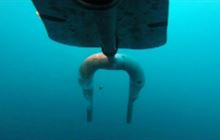Resources for other net fisheries
Introduction
An introduction to mitigation measures for fishing vessel crew involved in other net fisheries., e.g. set net and seine.Set net fisheries
Set netting or gillnetting is a static form of fishing conducted throughout coastal New Zealand waters catching a range of inshore fish such as rig, school shark, grey mullet, butterfish, elephant fish and flatfish. It involves the setting of a net of fine nylon secured vertically in the water column by weights and floats.
The dominant mitigation measures for this fishery are spatial and temporal closures in areas of high risk to well-known protected marine species such as Hector’s and Maui dolphins and yellow-eyed penguins (hoiho). Many other protected species are also susceptible to being incidentally caught in set nets, such as white pointer sharks, corals, fur seals and a range of seabirds. Observer coverage of set net fisheries has historically been low (0-5%) due to the difficulty of placing observers on board generally small vessels (less than 6m length).
There are currently no regulated mitigation devices required in set net fisheries, a previous CSP project investigated the use of acoustic pingers as one potential tool to reduce set net entanglements of Hector’s dolphins. There is also a current CSP project that aims to review worldwide dolphin dissuasive device use (DDDs) that are relevant to NZ inshore fisheries. Some set netting vessels (as well as trawlers) will require on-board cameras from the 1 November 2019, these are in inshore areas known to be Maui dolphin habitat. Get more information on on-board cameras.
Seine fisheries
The commercial purse seine fishery in New Zealand mostly targets skipjack tuna, jack mackerel and bue mackerel. Purse seining vessels fish the surface and subsurfaces zones and do not typically come into contact with the seafloor. One marine protected species, the spine-tailed devil ray (Mobula japanica) are the most commonly bycaught species in this fishery. Rays are often caught alive, and if returned to sea properly they have a high chance of survival post-interaction. Check out the handling and release guide for more information.
Ghost fishing
Ghost fishing is where lost or abandoned fishing gear continues to catch fish and other marine animals over its lifetime. As fish become caught, predators can be attracted to nets and then become entangled and die also. There is limited information on ghost fishing in New Zealand though there is the potential for hundreds of commercial and recreational set nets that could be ghost fishing around NZ’s coastline. Nets must be adequately weighted and buoyed to avoid the loss of nets and soak times adhered to to limit the threat of unwanted captures.
Fishers are responsible for handling all protected species appropriately in order to maximise the chance of survival. More more information on best practice methods of protected species bycatch and handling, check out the handling and release guide.
Commercial fishers are legally obliged to report any captures and releases of protected species, as well as noting the status of survival of the animal. It is not illegal to capture a protected species however it is illegal not to report it!

